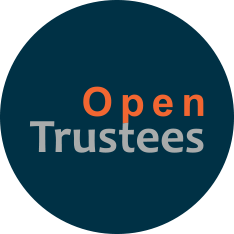Pensions Schemes Act 2021 – new code and guidance for contribution notices
In this insight we look at the consultation being run by Pension Regulator. This is the latest update in our series on the Pension Schemes Act 2021 in conjunction with our colleagues on the Osborne Clarke Pensions Team.
The Pensions Regulator (TPR) can issue a contribution notice, requiring the target to pay a set sum of money into a defined benefit (DB) scheme or section, to a DB employer, or any person who is “connected or associated” with an employer. This is one of TPR’s so-called “moral hazard” (or anti-avoidance) powers.
At the moment, there are two tests for a contribution notice, “material detriment” and “main purpose“. The Pension Schemes Act 2021 introduces two new and additional tests: the “employer resources” and “employer insolvency” tests.
With the new tests expected to apply from this October, the Department for Work and Pensions recently consulted on draft regulations to provide some detail around the employer resources test. TPR is now consulting on an updated code of practice and code-related guidance in relation to both.
How do the new tests work?
As the consultation paper explains, the two new tests:
“measure the impact that an act, or failure to act, has had on the employer relative to the scheme on a snapshot basis, comparing the situation with and without the act. The employer insolvency test considers the impact of the ‘act’ on the hypothetical insolvency outcome for the scheme, and the employer resource test considers the impact of the ‘act’ on the value of the employer’s resources, relative to the scheme’s deficit“.
In each case, the impact must be material and there is a reasonableness test (it must also be reasonable for TPR to issue a contribution notice, as is currently the case).
What does the draft code say?
The existing TPR Code of Practice 12 is a short document that focusses on the material detriment test.
The draft replacement code is also short. It has been expanded to set out the new employer insolvency and employer resources tests and includes an updated list of the circumstances in which TPR would expect to issue a contribution notice if one or more of the tests is met and the reasonableness requirement is satisfied.
The circumstances listed in the new draft code are as follows:
- sponsor support is removed, substantially reduced or becomes nominal (any of the tests);
- weakening of the scheme’s creditor position (material detriment and/or employer insolvency test);
- some instances of paying a dividend or a return of capital by the sponsoring employer (any of the tests);
- payments favouring other creditors of the employer over the scheme where no such sums are then due to those creditors (any of the tests).
What about the code-related guidance?
The draft updated code-related guidance includes examples of cases in which TPR is both likely and unlikely to pursue a contribution notice.
The examples of cases in which TPR is likely to take action are as follows:
- substitution of sponsor, such that sponsor support becomes nominal;
- disposal (for example, of part of a business), as the result of which sponsor support is reduced;
- transfer of scheme liabilities, as the result of which sponsor support is reduced;
- restructuring of group companies, as the result of which sponsor support is reduced;
- manufactured insolvency (to allow purchase of the business out of insolvency without the scheme), as the result of which sponsor support is removed;
- increase in debt/prior-ranking security, resulting in a weakening of the scheme’s creditor position;
- leveraged acquisition, resulting in a weakening of the scheme’s creditor position;
- payment of unusual dividends to parent company; and
- unscheduled repayment of loan, favouring other creditors.
This list is non-exhaustive and the draft guidance provides more detail on each example.
When will the new code and guidance apply?
The draft guidance suggests that the new code and guidance will come into force in October 2021. There is also a reference to the new draft code forming part of TPR’s new and single code of practice.
Open Trustees comment
The examples given in the new draft code and code-related guidance seem to confirm that the new employer insolvency and employer resources tests are about making it easier for TPR to impose a contribution notice, rather than about widening the range of behaviour that might be caught. In theory, the examples listed in the draft documents could all be caught by the existing tests, but the “snapshot” nature of the new tests is likely to make it easier for TPR to establish a case.
The drafts confirm that TPR might “choose to run more than one case in the alternative, for example, on the basis that the employer resources test is met or, in the alternative, because the material detriment test is met”.
TPR’s draft policy on the new criminal offences also confirms that TPR will consider Code of Practice 12 and the related guidance in deciding whether the material detriment test is met, for the purposes of the offence of conduct risking accrued scheme benefits.
There are still some questions that need to be answered. The employer resources test gives TPR the power to determine the monetary value of the effect of an act or failure to act on the resources of the employer. Will there be guidance on how it will do this? In addition, although the press statement accompanying the consultation says that “TPR’s new powers are expected to take effect from this autumn and, as already confirmed by the Government, will not be applicable to acts taking place before then”, the government has still to publish legislation to disapply the standard six-year look back for contribution notices.
We shall continue to follow developments and provide a further update in due course.


